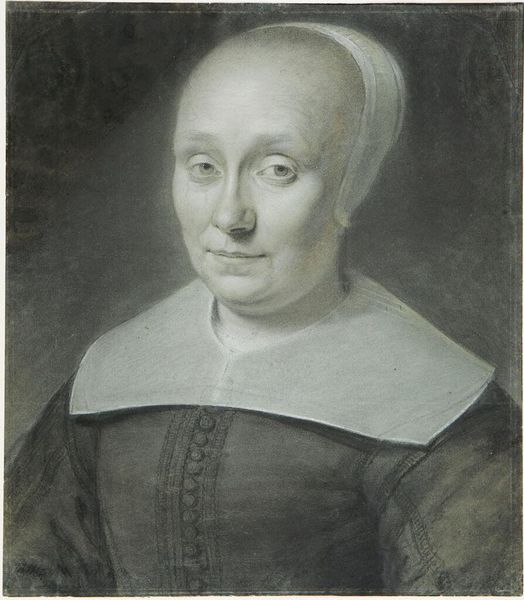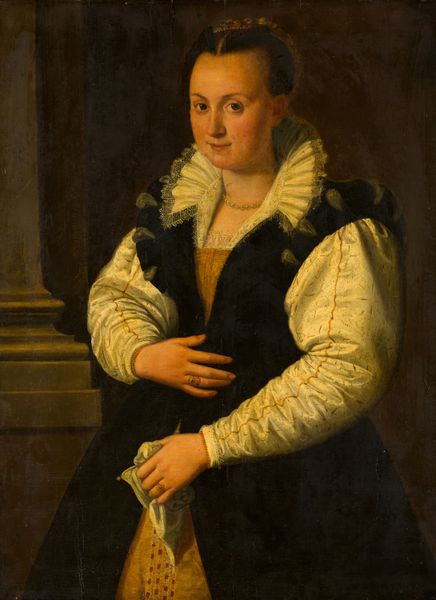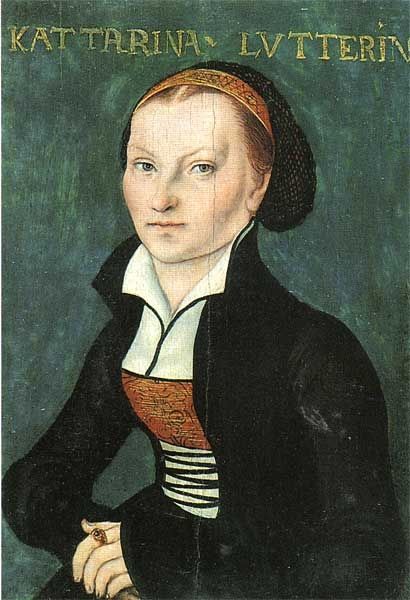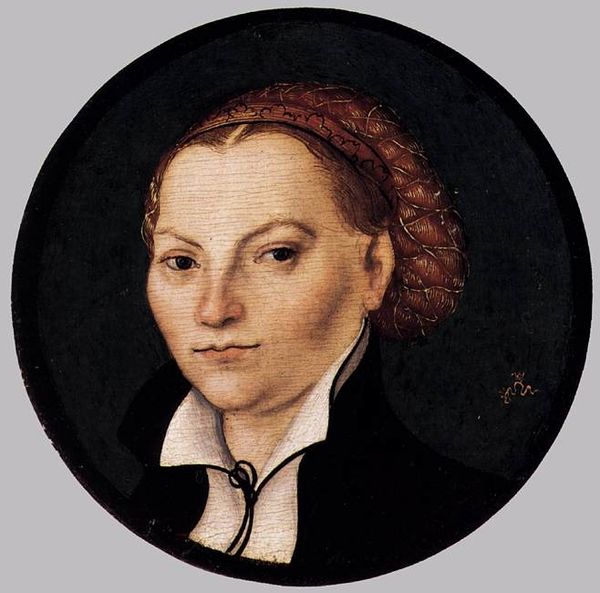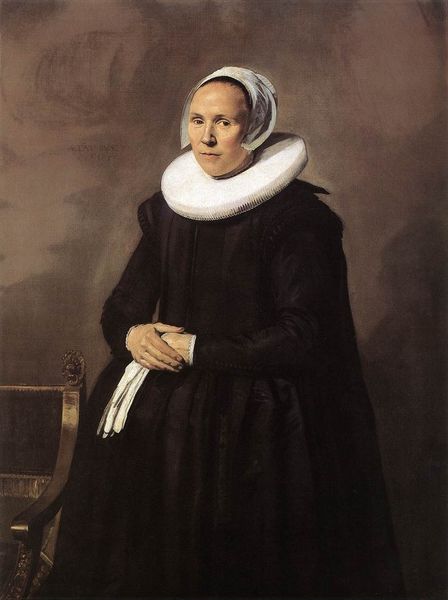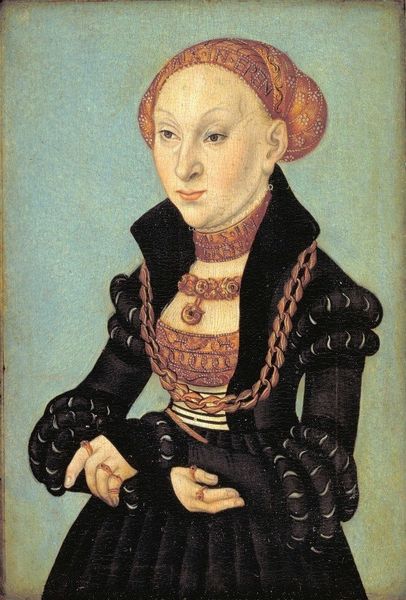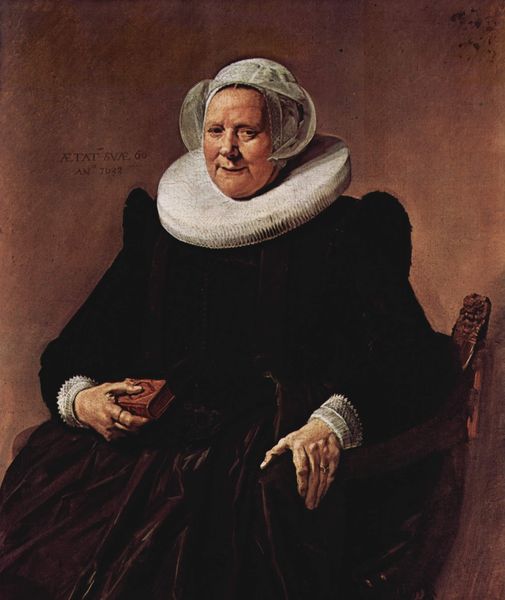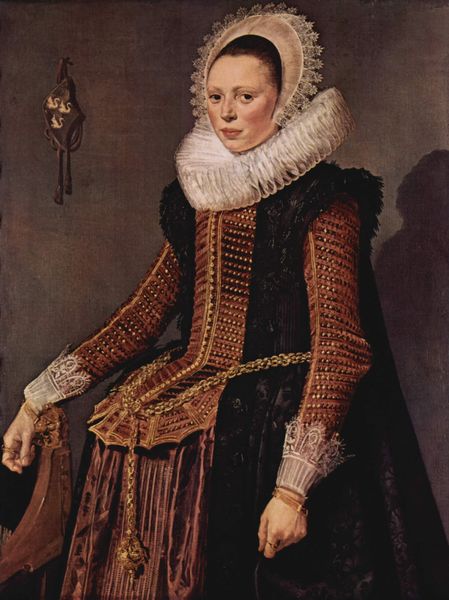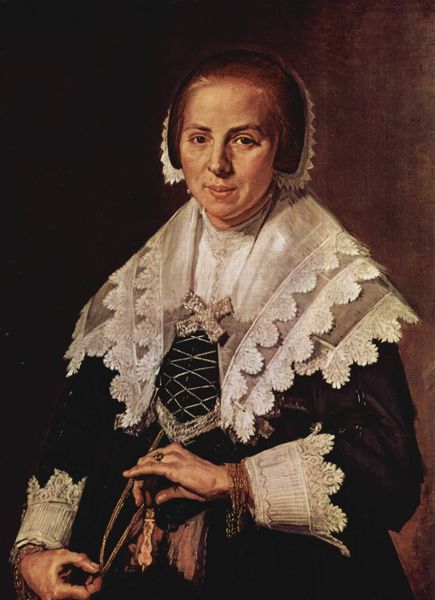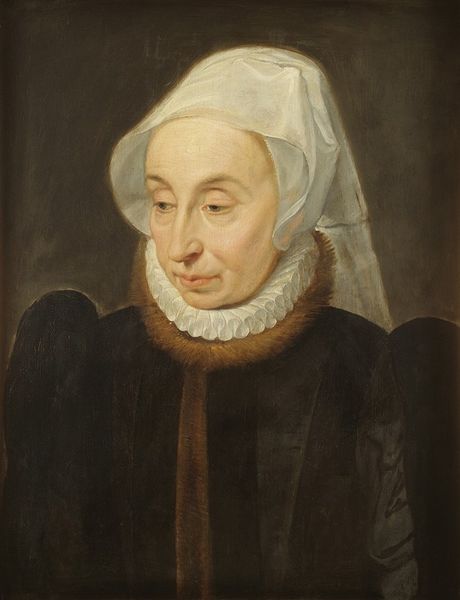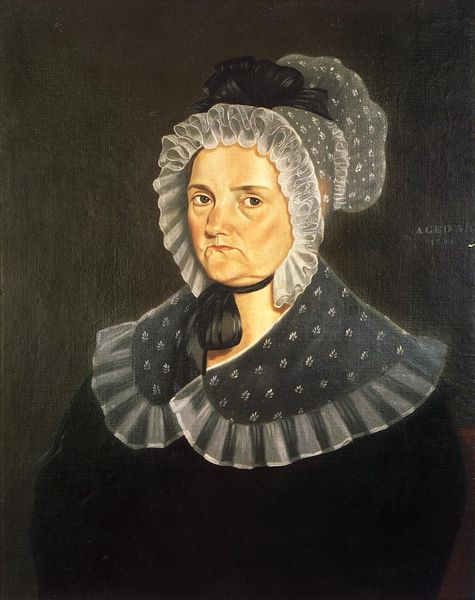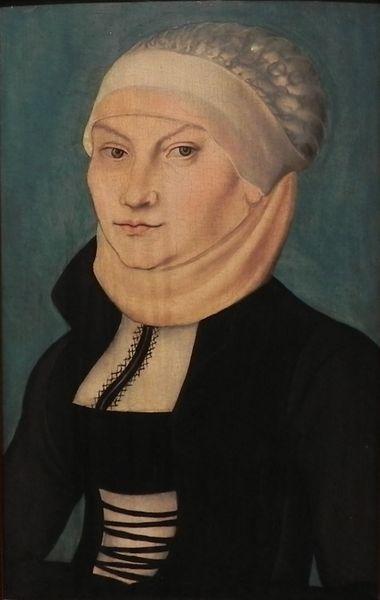
painting, oil-paint
#
portrait
#
figurative
#
painting
#
oil-paint
#
figuration
#
northern-renaissance
#
early-renaissance
Copyright: Public Domain: Artvee
Editor: This is "Portrait of a Lady," an oil painting by Lucas Cranach the Elder, created sometime between 1532 and 1535. It feels so formal, so posed, almost… austere. What do you see in this piece? Curator: Immediately striking is the planar arrangement, the geometric severity. The subject's costume, meticulously rendered in gold thread and pearls, exists in a careful counterpoint with the somber black of the gown and the flat, green background. Observe how the composition directs the eye to the central axis – the gaze, the ornamented band crossing her chest, her clasped hands. The artist prioritizes surface appearance, offering an intricate design of shapes and decorative values. Editor: So, you are saying the beauty here lies within these shapes and their relationship, rather than with what the portrait tells us about her personality? Curator: Precisely. Cranach manipulates form and color, deploying lines to create a deliberate decorative effect that surpasses simple mimetic representation. Look closely at how he defines the volume with limited use of shadows, creating an almost sculptural quality in her face. Editor: It's interesting how much emphasis is on the fabric and jewellery and how little is on individual details. Curator: Note also the smooth, almost porcelain-like quality of her skin. There's an intentional flattening of space here. The interest lies less in conveying depth, more in emphasizing the surface design and the relationships of color and texture. Do you find that limiting, or rather revealing of the essence of form? Editor: I never thought about portraiture in this way, only thinking of likeness and representation. I now realize that it is possible to derive aesthetic meaning outside the symbolic. Thanks. Curator: Indeed. We often look for narratives within artworks. By focusing on line, shape, color, and the arrangement of forms, we unveil an alternate understanding – art purely as art, its intrinsic value defined by the elements contained within the frame itself.
Comments
No comments
Be the first to comment and join the conversation on the ultimate creative platform.
